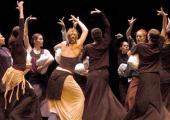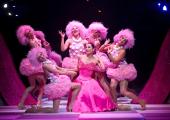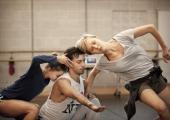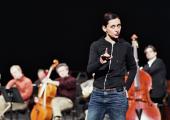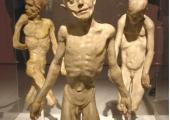The Rodin Project, Russell Maliphant Company, Sadler's Wells

Fantastical set and lighting for a dance idea still waiting to be properly born
Like a bleached Mount Parnassus for the gods, pouring linen down steep slopes in foaming white rivers, streaming white curtains up into heaven, few stage sets I’ve seen for a dance piece have been as captivatingly gorgeous as Es Devlin and Bronia Housman’s mountainous creation for Russell Maliphant’s new work. The dancers too are draped in white like gods - or statues to be unwrapped from dust-sheets. The visual metaphors cunningly overlap, for this is a work in which Maliphant intends homage to the art of sculptors, notably the French neo-classical rebel, Auguste Rodin.


